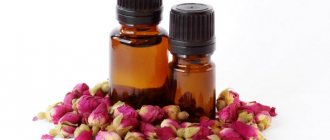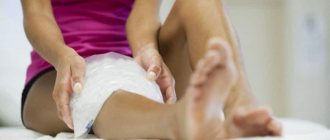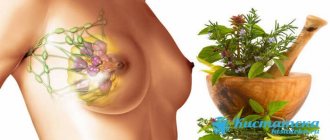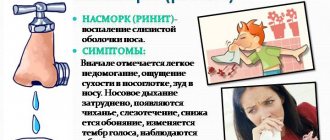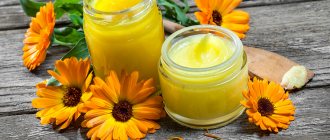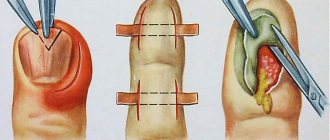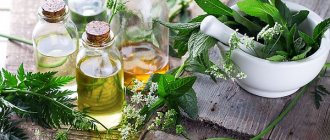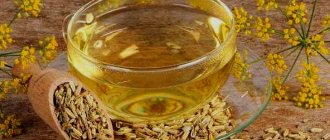- September 21, 2018
- Treatment methods
- Tatiana Voitik
Chronic inflammation of the joints, caused by a number of reasons, is commonly called polyarthritis. This pathological process can occur simultaneously or gradually in several places at once, which greatly complicates the diagnosis. The disease develops over many years, which allows it to become chronic. Therefore, in order to cope with the pathology and stop its further development, it is necessary to use complex therapy, in which treatment with folk remedies at home plays an important role.
Features and types of disease
Polyarthritis is characterized by the inflammatory process of the joints, in which their shell is initially affected, and later this leads to deformation and destruction of cartilage. People over 40 years of age are at risk, but sometimes the disease develops in young people due to excessive physical activity (athletes).
Depending on the root cause of the inflammatory process, the disease is divided into several main types. Each of them has its own characteristics and characteristics:
- Rheumatic. This type is characterized by accelerated development and is often a consequence of complicated sore throat or flu. The disease affects the small vessels of the extremities, but in the absence of adequate treatment it can damage the heart valve, which threatens the development of defects.
- Crystal. Occurs against the background of metabolic disorders in the body. Damage to the joints begins when there is excessive accumulation of salt in them, which leads to the formation of cracks and ulcers. This type of polyarthritis primarily affects the big toe, and with further development, gouty nodules appear on the skin over the affected joint.
- Reactive. The inflammatory process develops with a reduced protective reaction of the body and is most often diagnosed in young men. The cause of the appearance is a previous infection of the digestive system or its further spread through the respiratory and genitourinary system. This type of polyarthritis begins to develop 2–3 weeks after the infection enters the body. It often affects the lower and upper extremities.
- Rheumatoid. The cause of the development of this type of polyarthritis has not been established for certain, but hereditary predisposition plays a major role. The disease develops slowly, gradually destroying the joints, which leads to bone deformation and muscle necrosis. Initially it affects the wrists and phalanges of the fingers, but in the absence of treatment it spreads to the knee, hip and shoulder joints.
- Infectious. The development of the disease is caused by concomitant infectious pathology in the body, such as syphilis, tuberculosis, brucellosis, gonorrhea, scarlet fever. The variety can be recognized by swelling and stiffness of the joint.
- Psoriatic. The disease causes swelling of the joints with constant aching pain. The root cause of inflammation is psoriasis. The pathological process initially begins with the synovium of the joint, and subsequently switches to the ligaments and tendons.
Let's move on to discuss the next issue.
Which doctor treats polyarthritis?
The first question that arises among patients is which doctor treats polyarthritis of the joints. If the patient experiences symptoms such as joint pain in the morning or when moving, swelling around the affected joint, redness of the skin and impaired motor activity, then you should consult a therapist as soon as possible.
The fact is that polyarthritis is a whole complex of pathologies that arise for a variety of reasons, and depending on the type of disease, different specialists will deal with its treatment.
Read also: Compress for gout
A general practitioner will be able to take an anamnesis and evaluate the patient’s complaints, and prescribe blood and urine tests. Based on such an examination, the specialist will refer the patient to the specialist who is needed in a particular case.
If joint pain is associated with injury, the patient will be referred to a traumatologist or surgeon. In case of gout, treatment will be carried out by a rheumatologist, and the patient will also need to consult a nutritionist and endocrinologist. For rheumatoid arthritis, the patient will be advised to consult a rheumatologist and immunologist.
Characteristic signs
The sooner polyarthritis can be recognized, the better for the body, as this will help prevent many irreversible processes. Therefore, it is important to consult a specialist at the first suspicious signs to confirm or refute the diagnosis.
The main signs of the development of polyarthritis:
- aching pain of a periodic or constant nature, which increases significantly in humid weather or at night;
- redness and swelling of the skin over the inflamed area;
- local increase in temperature in the problem area;
- crunching during physical activity;
- deformation of the joints, which becomes clearly noticeable;
- after hypothermia, pain in the joints intensifies;
- immobility of the affected area;
- deformation of the fingers with their further deviation to the outside.
Next, we will consider the rules for treating polyarthritis with folk remedies at home.
Natural creams and ointments
How to treat polyarthritis with folk remedies using ointments? Try these natural anti-inflammatory recipes.
- Take 100 grams of regular salt and ground mustard seeds, add a little kerosene for viscosity. Mix all the ingredients to a homogeneous consistency and use it to rub sore joints with rheumatoid and rheumatoid arthritis.
- To prepare this cream from natural ingredients, we will need: 200 ml each of freshly squeezed black radish juice, certified vodka and liquid honey, 3 tbsp. l. coarse salt. Mix all ingredients thoroughly and store in the refrigerator. Use for rubbing inflamed joints when slightly heated.
- Treatment of polyarthritis with folk remedies at home necessarily involves the use of a substance such as turpentine. We recommend preparing this anti-inflammatory ointment based on it. Take 200 grams of turpentine, medical alcohol and olive oil, add 5 grams of camphor. Mix all ingredients, leave to brew in a cold place for 3 hours. Use to lubricate sore joints, after warming the product in your palms.
- An aspirin-based ointment for quickly relieving inflammation and pain is prepared as follows. You need to crush 2-3 tablets, add a little lemon juice and iodine. Rub into inflamed joints every day for a week. After a week's break, therapy is repeated.
- Take a new tube of any softening hand cream. Squeeze it into an enamel container, add 10-15 drops of oil-based vitamin E to the cream, 1 tsp. liquid honey, alcoholic tinctures of cinquefoil and red pepper. Mix everything until smooth, use for rubbing joints for rheumatism, rheumatoid and rheumatic arthritis.
Attention! For polyarthritis of the reactive (infectious) type, warming compresses should be used with extreme caution, after first asking your doctor for advice. The fact is that the warming effect can lead to the spread of infection and deterioration of the patient’s condition.
How to cope with painful symptoms?
It is possible to stop the further development of polyarthritis only by using several methods of therapy simultaneously. Therefore, it is necessary to combine medications with folk remedies, in consultation with your doctor. Separately, each type of treatment is not able to bring maximum effect.
However, treatment of polyarthritis with folk remedies should be carried out taking into account certain rules, which guarantees a positive result, so:
- Treatment procedures should be carried out regularly in courses.
- Upon completion, it is necessary to take a break for 2 weeks, and then repeat therapy using a different drug.
- You cannot independently change the dosage of components when preparing medicinal products, as this may provoke a further deterioration of the situation.
- When choosing a medicine, you must first study the composition and exclude drugs if they contain components that cause allergies.
- You should not rely solely on traditional medicine, since you cannot get rid of the disease without changing your lifestyle and balancing your daily diet.
Let's move on to traditional medicine recipes.
How to relieve pain?
To relieve pain and relieve inflammation, a specific treatment regimen drawn up by the attending physician is used. Analgesics, nonsteroidal anti-inflammatory drugs, and glucocorticoids are prescribed. If infectious polyarthritis is diagnosed, then antibiotics are prescribed without fail.
But an excellent addition to drug therapy would be the treatment of polyarthritis with folk remedies. It includes the use of various alcohol tinctures, infusions, ointments, water prophylaxis (baths and saunas), and even cold.
Infusions and tinctures
Treatment with folk remedies has been practiced for a long time. Many plants and herbs have healing properties, and therefore they are used to prepare various tinctures for polyarthritis.
Several recipes:
Mix nettle juice, preferably freshly squeezed, with high-quality alcohol in equal proportions. It is recommended to keep the product in a cool, dark place for 14 days. Take the tincture orally for six months, 3 times 30 ml half an hour before meals daily. The active raw material is marsh cinquefoil - about 200 grams of roots and cinquefoil roots - about 100 grams. Chop all the roots and place in a glass container with a volume of at least three liters. Fill to the top with high-quality vodka and keep in the dark for 3 weeks. Drink the tincture one tablespoon a day 3 times before meals. Pour boiling water over elderberry flowers (about 10 g), willow bark (about 50 g), and birch leaves (40 g) and leave until cool. Use the product three times a day, 150 ml. All these components have the ability to stop inflammatory processes in the joints and help reduce pain and swelling. Grind 20–30 g of fresh poplar leaves or poplar buds, brew with half a liter of boiled water, and leave to cool to room temperature. Drink the infusion three times a day. The drug is great for reducing pain. Brew 2 tablespoons of crushed flowers of the plant with 0.5 liters of boiled water, leave for at least two hours. Drink 100 ml as a healing tea three times a day.
Before you start drinking tinctures, consult your doctor which one is best for you.
Decoctions
Decoctions are no less effective for polyarthritis. Many useful herbs are used to prepare them. Healing infusions, depending on their taste, can be drunk like regular tea.
Lingonberry leaves, chamomile flowers, wild rosemary, juniper and string are suitable for decoction. You can cook them separately, but a decoction from the collection of these herbs is very useful. Place one spoon of all ingredients in a saucepan with 0.5 liters of clean water and bring to a boil. Boil over low heat for no more than 2 minutes, wrap, wait to cool. The decoction is ready. The product turns out rich and fragrant. For ease of use, it is recommended to strain the broth. Drink 100 ml three times a day half an hour before meals.
Bay leaf
A decoction of laurel leaves brings relief to suffering joints. It perfectly cleanses the body of salts. It’s easy to prepare a decoction: in the evening, brew a few leaves in 300 ml of boiled water, cook for about five minutes over low heat. After cooking, the pan is wrapped. However, you can pour it into a thermos. You should drink the decoction the next day in small portions.
Compresses
Many rheumatologists advise their patients, in addition to the main treatment, to make compresses according to traditional recipes.
There is a non-standard compress to reduce the painful condition for the brave and patient. Pack the ice in cellophane and wrap it in a cloth made of natural material. Apply to the joint for several minutes (no more than five). After the procedure, you should remove the bag and do a light massage. After the massage, be sure to wrap the sore spot in warmth. The course of treatment is long, 20 days without breaks.
Doctors are hiding the truth!
It is not difficult to completely restore JOINTS! The most important thing is to rub this on the sore spot 2-3 times a day...
>
What other compresses are effective for polyarthritis:
Salt and herbs. Brew birch leaves, rose hips, knotweed herb with a liter of boiled water and keep in a water bath for about half an hour, then add salt (4 tablespoons). Moisten a wool cloth with saline solution, dry it and apply it to the sore joint. Fir oil and sea salt. Using a hot compress of sea salt (fill a regular piece of cloth or an old clean sock with sea salt calcined in a frying pan) you can successfully treat rheumatoid arthritis. To do this, you need to thoroughly warm up the sore joints for 15 minutes. Soak a clean paper sheet with fir oil, attach it to a heated place, and wrap it up. Use the compress with caution. Do not overexpose the compress - 20 minutes is enough.
Fir oil is often recommended to be used separately, gently rubbed into diseased areas of the body. After the procedure, rest is advisable.
A compress made from an oil or alcohol solution of propolis (1:10) will also be effective for polyarthritis. It will help you get rid of severe joint pain in the shortest possible time. It is recommended to apply a compress to the sore spot and wrap it in a woolen cloth for 40–60 minutes. The course of treatment is only ten days.
Another non-standard compress option is soft mittens. You will need winter gloves, plastic bags and salt. Soak the mittens in saline solution (a tablespoon of salt per 200 ml of water), wrap them in a bag and go to bed. Systematic use of such treatment helps reduce inflammation in the joints.
Ointments
Pharmacies sell many different creams and ointments that help with inflammatory processes in the joints. However, you can also prepare fresh ointment at home and successfully use it to improve blood flow and rub joints.
Several recipes:
Mustard ointment. You will need mustard (100 g), salt (100 g), and a little kerosene. Mix thoroughly to form thick sour cream and use as directed. It is assumed that rheumatoid polyarthritis will respond fairly quickly to treatment. Aspirin ointment. Grind two tablets of acetylsalicylic acid, mix with 3% iodine solution and lemon juice to obtain sour cream. After a week's break, you can repeat the procedure. Pepper ointment. Buy any hand care cream and an oil solution of vitamin E. Squeeze the contents of the tube (50 g of cream) into a glass bowl, mix with 10 drops of vitamin E, a spoonful of natural honey, a spoonful of hot pepper tincture and marsh cinquefoil. Gently rub into painful areas of the body. It is believed that rheumatoid polyarthritis relieves its aggression after a week of use of the ointment.
Be careful with ointments. If redness or other manifestations of allergies appear, consult a doctor.
Baths
Taking a bath is always a pleasant and healing procedure. Medicinal baths will help relieve inflammation, reduce pain, and stop joint deformation. For this purpose, it is advisable to use burdock, knotweed, pine needles, nettles, and birch leaves. Carry out the procedures daily for half an hour before bedtime.
Red clover and chicory have positively proven themselves in the complex treatment of polyarthritis. Take baths every other day, if desired, daily, for at least 20 minutes. The temperature of the bath should be pleasant for the patient's body. It is recommended to use similar procedures separately for hands.
Infusions, tinctures, decoctions
To begin treatment of polyarthritis at home, it is necessary to take oral medications that will strengthen the body as a whole and begin to fight the disease from the inside. Various herbal remedies will help with this. When preparing them, it is necessary to strictly follow the procedure and dosage of the components. The course of treatment is prescribed by the therapist based on the severity of the disease and the individual characteristics of the patient. Let's look at some recipes:
- Tincture of cinquefoil. Grind the plant collection and pour it into a dark glass container, filling it halfway. Fill the mixture with 70% alcohol to the top of the bottle. Seal tightly and leave in the dark for 20–25 days. Subsequently remove impurities. Use 30 ml for oral administration for advanced cases, and 15 ml for mild cases three times a day.
- Herbal infusion. Grind all components in equal proportions: nettle, birch foliage, violet and parsley root. Pour 250 ml of boiling water over 15 g of the mixture. Leave the infusion for 15 minutes, clean. Take 4 times every day, drinking 50 ml of drink at a time.
- Decoction. Mix sage, calamus, bearberry and St. John's wort in equal amounts. Next, pour 15 g of the medicinal mass into 250 ml of boiling water. Place the mixture in a water bath and simmer for 20 minutes. After time, cool and peel. Take orally daily, drinking 100 ml of the drink.
Let's move on to another method.
Effective recipes for infusions and decoctions
Even “advanced” joint problems can be cured at home! Just remember to apply this once a day.
This treatment will make it possible to restore cartilage tissue and prevent its destruction:
- bay decoction. It effectively fights bacteria, inflammation in the joints of the phalanges, and eliminates salt deposits. To prepare, you will need 5 g of dried bay leaves, pour 300 ml of boiling water over them and simmer over low heat for about 5 minutes. There is no need to cover the container with a lid. The broth is poured into a thermos, where it is infused for several hours. It is better to steam the leaves in the evening so that the liquid is ready for use in the morning. Treatment of polyarthritis of the hands in this case is carried out as follows: the resulting product must be divided into small portions and drunk within 12 hours. You should not drink the entire volume of liquid at one time, as this may cause internal bleeding. You should not treat polyarthritis with this remedy if the patient has concomitant kidney pathologies, cholecystitis, cholelithiasis;
- infusion of marsh cinquefoil herb. Such folk treatment will make it possible to preserve the integrity of cartilage tissue, reduce pain, and restore synovial fluid. For cooking, you can use both the plant itself and its roots. This will require 1 tbsp. l. crushed dried raw materials, pour a glass of boiling water. This folk remedy is heated in a water bath for about 10 minutes, and then additionally wrapped in a warm towel for another half hour. The finished infusion needs to be strained, the cake squeezed out and boiling water added to bring the total amount of the mixture to 200 ml. You can buy cinquefoil at the pharmacy. The pathology should be treated as follows: the infusion is taken one tablespoon three times a day. It is advisable to drink it after meals.
Treatment with these folk remedies helps to significantly reduce the pain and swelling caused by polyarthritis. At the same time, the joint is restored, blood circulation in the tissues improves. At home you can prepare the following remedies:
- pine infusion. It is necessary to pour 3 tbsp. l. needles with a liter of boiling water. Cool the mixture to room temperature, pour it into a bowl and place your hands in it. You need to keep your fingers in the liquid for about 15-25 minutes. While taking such a bath or after the procedure, it is advisable to lightly massage each finger;
- paraffin compress. It is necessary to heat the raw material to 50 degrees and slowly lower the joints of the hands into it. The fingers are removed for a few seconds. When the paraffin dries, you need to put your hands back into the heated mass. So, it should be repeated at least 5 times. This folk treatment warms up each finger well. And since the skin tightens slightly when the paraffin cools, this has a slight massage effect on each joint;
- alcohol-honey compress. The alcohol, previously diluted in a 1:3 ratio with water, should be mixed with the same amount of honey. Next, the mixture is placed in a water bath and heated for 10 minutes. It is very simple to treat joints with this remedy: you need to moisten a cloth with the resulting liquid and wrap each damaged finger. It is best to use this compress at night, although in case of severe pain, daytime use is not excluded. The presented folk treatment can be used for a long time;
- It is good to treat polyarthritis of the joints of the hands with compresses made from heated flax seeds. To do this, the raw materials are poured into a small bag made of soft fabric that will not scratch the skin, and placed overnight on each sore finger. The leaves of the plant can also be used for treatment.
Traditional therapy can cope well with polyarthritis if the joint is not yet severely deformed. Therefore, the most effective use of such drugs is considered to be in the initial stages of the disease.
Features of using homemade ointments
The presented folk therapy increases blood circulation, removes harmful substances from the body, and increases the effectiveness of the fight against polyarthritis. The following recipes can be used for rubbing:
- Ointment made from mustard powder and kerosene. To prepare it, use 100 grams of powder, the same amount of table salt and kerosene. All components are mixed well until a creamy paste is formed. The ointment is used to rub into the affected joint.
- The following remedy also works well against diseases such as polyarthritis. It is necessary to combine 50 g of mustard powder, the same amount of camphor and 100 ml of alcohol. 100 g of egg white is added to this mass. After this, all components need to be kneaded well. This ointment should be used once a day. You need to rub it into your fingers until it is completely absorbed.
Compresses
But for effective treatment of polyarthritis, it is necessary to use external agents. This will help significantly alleviate the patient’s well-being and eliminate unpleasant symptoms. Therefore, it is recommended to treat polyarthritis of the fingers and other forms of the disease with folk remedies in the form of compresses and lotions. The effectiveness of therapy largely depends on the regularity of the procedures.
Here are effective recipes for folk remedies for the treatment of polyarthritis of the joints, so:
- Eucalyptus oil. Soak a cotton pad generously in the product. Apply to the inflamed joint, wrap with plastic on top, and then secure with a bandage and leave until the morning. Repeat daily until pain is completely eliminated.
- Warming compress. Mix the following components in equal quantities: honey, ammonia, iodine, glycerin. Soak a gauze bandage in the mixture and place it over the inflamed joint. Wrap the top with film and wrap it with a woolen scarf. Remove the compress in the morning. Carry out the procedure every evening until the unpleasant symptoms disappear.
- Vodka rub. For 100 ml of vodka add 50 ml of fresh beet juice, 30 ml of honey, 10 g of salt. Stir until smooth. Rub the problem area 5 times during the day, and wrap it in a woolen scarf before going to bed. To achieve lasting results, use the product daily until relief occurs. It is especially recommended to use this folk remedy for the treatment of shoulder polyarthritis.
- Black radish compress. Peel the root vegetables and then grind them to a paste consistency. Apply the mixture to a fabric bandage and apply it to the inflamed area, apply polyethylene and a bandage on top. Leave the product on overnight, but if a burning sensation appears, remove it and lubricate it with a rich cream. Noticeable relief will come after using the procedure 3 times.
Treatment with folk remedies for polyarthritis of the knee joint in the form of compresses and rubbing helps restore mobility, reduces inflammation and eliminates pain in the shortest possible time. But before starting therapy, you need to discuss its duration with your doctor.
Treatment of joints with external means
Polyarthritis can also be treated (treatment with folk remedies) using external compresses, lotions, and ointments.
They cope well with inflammation and swelling of the joints.
All you need to do is correctly recreate a recipe that has been tested by time and more than one generation of patients.
The most popular treatment methods are:
- Take 1 liter of boiling water, 3 tablespoons of crushed rose hips, knotweed herb and dried birch leaves, mix and cook over moderate heat for 20 minutes. Afterwards, the resulting broth is infused for 1 hour, 4 tablespoons of sea salt are added to it and mixed thoroughly so that the salt is completely dissolved. The resulting product is moistened with a woolen cloth and applied to the affected area;
- take 150 ml of medical alcohol (70%), turpentine, Provençal oil, 3 g of camphor. The resulting ointment is rubbed into the inflamed joints every evening in a circular motion;
- 2 medium-sized hot peppers are crushed, seasoned with 2 tablespoons of kerosene and 1 spoon of dope. The mixture is poured with 500 ml of water or diluted alcohol and left for 2 weeks in a cool, dark place. Afterwards, the joints affected by polyarthritis are rubbed. The course lasts until positive dynamics of the disease are obtained;
- take 200 g of glycerin, iodine, medical bile, mix and apply to sore spots as a compress at night or for a day;
- 2 glasses of fresh black radish juice are mixed with 100 ml of vodka without additives, 1 teaspoon of salt and 2 tablespoons of bee honey. Rub the joints with this ointment and wrap them thoroughly.
There are other ways to treat joint disease at home and relieve its symptoms. It will be useful to rub eucalyptus oil into the joint area several times a day.
If you dilute a tablespoon of vinegar in half a liter of water, moisten a piece of cloth in the resulting solution, apply it to the inflamed area and wrap it, then the symptoms of polyarthritis will become milder. Salt compresses on joints are also used.
Read also: Mineral water for gout
Such compresses are made no more than 8 times in a row, after which they are washed off.
Ointments
Treatment of polyarthritis of the shoulder joint with folk remedies helps eliminate stiffness of movement and eliminates pain. To do this, it is better to use ointments based on healing components. Let's consider effective means:
- It is necessary to grind the juicy parts of the celandine to a uniform mass. Squeeze the juice and mix it with Vaseline in a ratio of 1:4. The product can only be used without dyes or other additives. Rub the ointment into problem areas 5 times a day.
- Dry 250 g of acorns and grind them to a powder consistency. Add 1/2 tsp ground black pepper. Mix the resulting mixture with pork fat in an equal volume. Apply the ointment in a thick layer to the inflamed joint, and wash off after 20 minutes. After this, wrap the problem area in a wool scarf. Repeat therapy twice a day until pain is completely eliminated.
- Mix dried laurel leaves and juniper needles in a ratio of 6:1. Grind the mixture to a powder consistency and combine with 12 parts butter. Use the ointment for acute pain, and use the refrigerator for long-term storage.
Let's learn about other means.
The use of decoctions and infusions
Systemic therapy is provided by taking medicinal infusions and decoctions orally. For polyarthritis, the following proven recipes are recommended:
- Tincture of Sophora. The herb is poured with alcohol or vodka in a proportion of 50 g per 250 ml and infused for at least 20 days. The product is taken 18–20 drops 3 times a day for 30 days.
- Dandelion infusion. The roots and leaves of the herb are crushed and infused in boiling water (1 tbsp per 250 ml) for 55–70 minutes. Use 50–60 ml before meals (25–30 minutes before).
- Garlic tincture. Chopped garlic (2 heads) is kept in alcohol or vodka (250 ml) for 9–12 days. Take it with milk, 1 tsp before each meal.
- Decoction of the mixture: pine twigs (40 g), rose hips (2 tbsp), garlic (1 clove) and a little onion peel. The mixture is poured with water (2 liters) and boiled for 25–35 minutes, after which the broth is infused for about 50 hours. The daily norm is 1–1.2 liters.
- Bay decoction. Dry bay leaves (10 g) are poured with water (0.5 l) and boiled for at least 6-7 minutes. Then the broth is infused for 50–65 minutes. The first portion (250 ml) is drunk over 12–13 hours in several doses. You cannot drink the composition at once to avoid side effects.
- Infusion of marsh cinquefoil. Prepared in the proportion of 1 tbsp. chopped herbs to 250 ml of boiling water. The composition is infused for 25-30 hours. Use 1 tbsp. 3 times a day.
- Violet infusion. Flowers (30 g) are used, which are poured with boiling water (0.5 l) and infused for at least 1.5 hours. The infusion is taken in a dose of 1 tbsp. 3–4 times a day.
- Turnip juice is mixed with honey and drunk at the rate of 300 ml per day.
- Lingonberry tea. The leaves of the berry are brewed with boiling water. The composition is drunk 100-150 ml 2-3 times a day.
Baths
Treatment of polyarthritis of the legs with folk remedies is best carried out using healing baths for 7-10 days, even despite relief after 2-3 sessions. This will help strengthen and consolidate the positive result. In this case, you should use the following recipes:
- Take 20 g of sage harvest and pour it into 5 liters of hot water, mix. When the temperature of the infusion reaches 37 degrees, lower your feet into the bath. The duration of the procedure is 20 minutes. Next, you need to wipe your limbs and put on woolen socks, leaving them overnight. Repeat the therapy every evening before bed for a week.
- Pour 200 g of dry straw into the pan. Add 5 liters of water, boil for half an hour, without bringing the mixture to a strong boil. Next, you need to pour the broth into a basin and allow it to cool to a comfortable temperature. Soak your feet in the bath for 25 minutes and then wipe dry. Put on socks. Carry out treatment every other day for 1.5 weeks.
- Pour 100 g of laurel leaves into 5 liters of boiling water. We insist until the liquid cools to a temperature of 37 degrees. You need to take a foot bath for 30 minutes, after drying, wrap your feet and leave them like that until the morning. The procedure is carried out for 7 days.
Consider the following treatment method.
Rheumatoid arthritis treatment with folk remedies
Have you been trying to heal your JOINTS for many years? Head of the Institute for Joint Treatment: “You will be amazed at how easy it is to heal your joints by taking every day...
RA is a very common disease that causes inflammation in the joints. It affects not only adults, but also children. The disease is treated with medication. But traditional treatment for rheumatoid arthritis also gives successful results.
- Potato compress
- Vinegar compress
- Wine compress
- Other methods
- Rubbing agent
- Homemade ointment
- Sabelnik oil
- Herbal treatment
- Pine balsam
- Decoction of bay leaves
- Tincture of cinquefoil
- Decoction of cinquefoil
- Video on the topic
Traditional methods are aimed at containing relapses and maintaining the patient’s relatively good physical shape. Against rheumatoid arthritis, traditional methods use restorative diets, decoctions, tinctures, compresses, baths, rubbing, ointments, massage.
Traditional treatment for rheumatoid arthritis also involves tying cabbage, burdock and coltsfoot leaves to the sore joints. They quickly relieve pain.
Potato compress
Potato compress effectively relieves pain. For this, grated potatoes are placed in a sieve and placed in a bowl of hot water and immediately removed. The unsqueezed pulp is placed in a cotton bag and tied to the sore joints overnight. Repeat every day for one week.
Vinegar compress
You can get rid of acute pain using a vinegar solution. 6% vinegar (20 g) is dissolved in hot water (half a liter). The towel is moistened with the resulting solution and placed on the damaged joints, wrapped in a blanket.
Wine compress
Warm red wine (250 milliliters) is mixed with mustard (40 grams). Soak a cloth in the resulting mixture and make a compress for a quarter of an hour. The product stops the development of inflammatory phenomena.
Other methods
Pine baths, ointments and rubbing have a positive effect on sore joints. They occupy a leading place among folk remedies for rheumatoid arthritis. My patients use a proven remedy that allows them to get rid of pain in 2 weeks without much effort.
Rubbing agent
Juice squeezed from black radish (500 milliliters) is mixed with vodka (100 grams), honey (200 grams) and salt (20 grams). Rub into sore spots. Helps relieve aches and pain in joints.
Homemade ointment
The yolk is combined with turpentine (8 grams) and apple cider vinegar (6 grams). Apply to sore joints. The ointment relieves pain and reduces inflammation.
Sabelnik oil
Minced cinquefoil inflorescences are poured with sunflower oil, after placing them in a glass jar. Having tied the neck with gauze, the jar is placed in the sun for 40 days. The oil is applied to the sore joint.
Herbal treatment
Decoctions are often prepared from cinquefoil, tansy, yarrow, horse sorrel, dandelion flowers, coltsfoot, St. John's wort, burdock, nettle, chamomile, and hops. Due to the anti-inflammatory properties of herbs, they are highly effective for rheumatoid arthritis.
Pine balsam
The balm inhibits inflammatory processes and relieves pain. To prepare it, mix pine branches (40 grams), rose hips (40 grams), onion peels (20 grams) and finely chopped garlic (1 clove). The resulting mixture is poured with water (2 liters), boiled for half an hour and left for 24 hours. The strained infusion is drunk throughout the day (liter per day).
Crushed leaves (20 grams) are poured with hot water (500 milliliters) and kept on fire for 10 minutes. The broth is poured into a thermos to infuse. They drink 80 grams three times a day for half a month.
Home applications
This method of treating polyarthritis of the fingers with folk remedies allows you to relieve inflammation and pain, as well as achieve long-term remission. But for this it is necessary to perform procedures regularly. Let's look at some:
- It is necessary to dilute green or blue clay to the consistency of thick sour cream. Apply the mixture to your fingers and arms in a thick layer. Wrap the top in plastic and wrap it in a woolen scarf. The product should be removed after 3 hours. Treatment is carried out every other day for 2 weeks.
- Heat beeswax to a temperature of 39 degrees. Soak multi-layer bandage strips in the product. Wrap them around your fingers or other inflamed area. Place film on top and wrap in a towel. After 20 minutes, remove the application. Apply beeswax daily for 2 weeks.
- Dilute mustard powder with heated red wine to form a thick dough. Apply the mixture to the inflamed joints in a thick layer. Wrap the top with film and then with a woolen scarf. After 20 minutes, remove the application. Treatment is carried out in the evening for 5 days in a row.
Let's find out what else can be used to treat polyarthritis.
How to get rid of the disease at home?
Treatment of polyarthritis at home directly depends on the desire and efforts of the patient himself. Already at the first signs of this disease, you should immediately give up bad habits, quit smoking, drink alcohol, and switch to an active and healthy lifestyle.
Vegetable broths, carrot and beet juices, herbal teas and decoctions, rice, fruits, vegetables and legumes are useful for polyarthritis.
A significant reason for the development of this disease is considered to be poor nutrition. Sugar, salty, smoked and fried foods, spicy seasonings and alcohol contribute to the accumulation of toxic substances in the human body. One of the most important stages of home treatment for polyarthritis is diet. It should be aimed at saturating the body with minerals, vitamins and microelements. Patients with the described illness are not recommended to eat wheat and corn cereals, rye, oatmeal, citrus fruits, pork, and whole milk.
Cryoprocedures
Polyarthritis of the hands can be effectively treated with folk remedies, as well as other joints using cold. This helps eliminate swelling, pain and stiffness of movement.
To carry out treatment, you need to place ice in a bag and apply it to the sore area for 7-10 minutes. After removal, a kneading massage of the area should be performed for 10 minutes. Then repeat the procedure again, that is, apply cold and then massage. Subsequently, the inflamed joint should be wrapped in a warm scarf and left in this form for 5–8 hours. Repeat therapy daily for 3 weeks.
Reviews about the treatment of polyarthritis with folk remedies
According to doctors, it is possible to get rid of the disease and restore health only after identifying the cause that provokes its development. Therefore, diagnosis is an important step on the path to recovery. If an infectious type of polyarthritis is detected, treatment with folk remedies at home is not able to completely eliminate the pathological process. Therefore, it must be carried out only in combination with drug therapy.
With polyarthritis, the patients themselves call the symptoms and treatment with folk remedies interrelated and recommend listening to the opinion of their attending physician.
Polyarthritis is a serious disease that can subsequently lead to disability, so you should not ignore the first signs and delay treatment. First, it is necessary to identify the root cause of negative changes in the body in order to stop their further development with the help of medications and traditional medicine.
Polyarthritis - symptoms.
Polyarthritis is one of the diseases that are characterized by simultaneous or sequential inflammation of several joints.
Since the disease occurs due to various reasons, the symptoms of polyarthritis and its course may be different.
Causes of polyarthritis. Types of polyarthritis.
It is customary to distinguish three main types of disease. Depending on the type of polyarthritis disease, it is decided how to treat it. The first, and most common type, is infectious polyarthritis. It almost always occurs against the background of an untreated infectious disease.
Crystalline polyarthritis, otherwise called metabolic polyarthritis, is caused by metabolic disorders. Popularly known as gout. A very painful type of polyarthritis, but how to treat this type is well known.
And finally, rheumatoid or systemic polyarthritis. The causes of this type of polyarthritis have not yet been determined. Perhaps this type of disease is provoked by injuries, allergies, auto-allergies.
What happens to joints during polyarthritis?
The membranes surrounding the joint, like the tissues of the joint itself, contain a large number of nerve endings and various blood vessels. This structure causes easily developing inflammatory processes in the joint. In this case, inflammation develops in response to both external and internal influences.
Read also: Bursitis on the foot
If polyarthritis is infectious, then most likely the infection entered the joint with blood. This type of disease is acute and can lead to purulent damage to the joint. Since infectious polyarthritis is a disease associated with the presence of a common infectious disease, it must be treated first. Infectious polyarthritis, its symptoms and treatment depend on the disease that led to the onset of joint disease.
Crystalline polyarthritis is caused by salts that are deposited in the joint tissues and damage the joint membranes. Dietary disorders are considered one of the causes of this type of disease.
Rheumatoid polyarthritis is the most difficult to treat. The causes of this disease include malfunctions of the immune system, genetic factors, the influence of an unfavorable environment and many others. With rheumatoid polyarthritis, not only inflammation of the tissues and membrane occurs, but also the development of new tissue - granulation tissue, which destroys intra-articular cartilage. In addition, this type of disease leads to disruption of the kidneys, heart, and vascular system. Therefore, its second name is systemic polyarthritis. It is extremely important to notice the symptoms of polyarthritis in time, diagnose the disease and begin treatment of polyarthritis in the early stages.
Timely diagnosis of polyarthritis.
As practice has shown, polyarthritis begins completely unnoticed. Initially, a slight swelling appears in the joint area, which is initially attributed to simple swelling, bruises, or injuries. Later, pain is added to the swelling. The disease may be accompanied by increased fatigue, weight loss, and fever.
It is very important at this stage to correctly diagnose the disease and determine its etiology. Only with the correct diagnosis and timely initiation of treatment for polyarthritis, it is possible, if not to completely get rid of the disease, then to achieve a significant improvement in the patient’s condition.
Symptoms characteristic of a particular type of polyarthritis require different treatment.
If the diagnosis is not made in a timely manner, the disease will progress: muscle drying, joint deformation, and damage to internal organs are possible.
If you do not seek help in a timely manner, the patient may acquire permanent dysfunction of the joints and, as a result, disability.
Method of treating polyarthritis with fir oil and sea salt.
In order to get rid of such an unpleasant symptom of polyarthritis as long, aching pain in a damaged joint, traditional medicine recommends the use of compresses, tinctures and ointments.
The most effective method of treating polyarthritis can be considered a sea salt compress. To do this, you need to prepare sea salt and fir oil.
First, using a sea salt compress, we warm up the joint: heat the salt in the oven or in a frying pan, pour it into a prepared towel, roll it up and wrap it around the sore joint.
After 15-20 minutes, remove the salt, wrap the joint in a cloth soaked in fir oil, and wrap the heated salt on top again. The compress can be additionally secured with a bandage. Keep for 30-35 minutes.
Traditional treatment of polyarthritis with salt and fir oil will help to almost completely get rid of the symptoms of polyarthritis, even with the rheumatoid type of the disease.
Aspen buds in the treatment of polyarthritis.
Traditional medicine ascribes the use of aspen buds for a variety of diseases. But specifically for polyarthritis of the joints, treatment with aspen buds is considered one of the most effective treatment methods.
In order to properly prepare an infusion for the treatment of polyarthritis , it is necessary to collect the buds on a dry, warm day, when the buds are already swollen, but have not yet opened. It is necessary to collect such a number of aspen buds to half fill a half-liter glass container. The collected buds are filled with vodka, sealed tightly and placed in a dark place. Infusion time is a month. In this case, it is necessary to shake the container periodically.
Take the prepared tincture three times a day. The dosage is 25 drops of tincture in half a glass of water. It is advisable to consume it an hour and a half before meals.
Folk treatment of polyarthritis with a golden mustache.
Polyarthritis is well treated with folk remedies. Golden mustache is used both for external treatment: for applying compresses, and for internal use: in the form of an alcohol tincture.
To make a compress, take about 40 pieces of golden mustache and pour half a liter of vodka. The mixture is infused for about two weeks. In this case, it is necessary to shake the container with the tincture daily.
It is used as a regular compress: the cloth is generously moistened, wrapped around the sore joint, covered with cling film on top and insulated with a towel. You can keep the compress for up to 2 hours. Usually, from the first use, the effect is noticeable: pain is significantly reduced, swelling subsides. You can repeat this two to three times during the day. After relief occurs, continue using compresses for a few more days - this will consolidate the effect.
Treatment for polyarthritis of the joints involves complex treatment, so the tincture is used internally along with compresses. It is made almost exactly the same way, only the number of rings per half liter of vodka is about ten. Drink a tablespoon of tincture three times a day. Take the tincture before meals.
With constant use of tincture and compress, joint mobility improves, exacerbations occur less frequently.
Horse chestnut for the treatment of polyarthritis.
Polyarthritis can such as horse chestnut tincture and ointment.
For the tincture you will need five horse chestnut fruits. In spring, you can replace fruits with flowers (the same amount). The fruits are crushed, poured with 0.7 liters of high-quality vodka and infused for a week in a dark place.
Take 40 drops orally before meals, three times a day. You can take either a diluted tincture or pure. You can make compresses from the same tincture.
For the ointment, take five horse chestnut fruits, grind them as finely as possible (you can use a coffee grinder), and add a glass of fat. Olive oil or butter is suitable as fat. Simmer the resulting mixture for half an hour in a water bath. Stir the resulting mixture well and let it sit for a day. After this, the ointment is ready for use.
Like all diseases, treatment of polyarthritis begins with changing your attitude towards your health. It is necessary to follow a diet and adhere to the daily regimen prescribed by the doctor. And, of course, once you start treatment, do not interrupt it.
